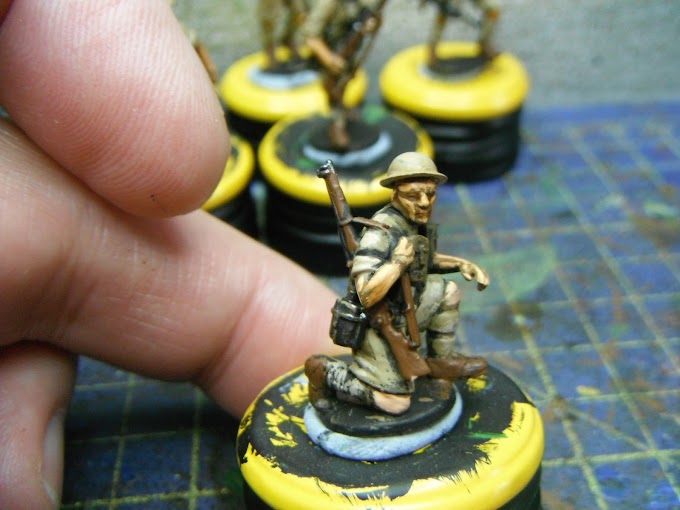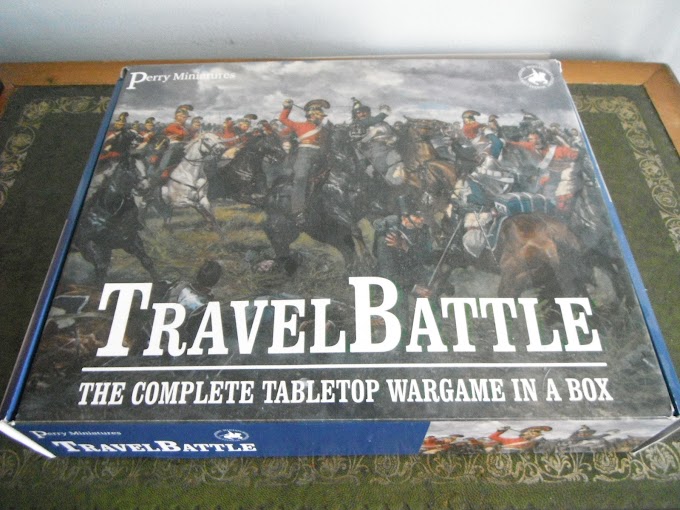Historiography of the Peace Conference of 1919 and Surrounding Events
jjzjzjzjzjzjzjzjzjz
May 14, 2019
The events of records were documented as an goal form of non-fiction in the course of time. The way in which historians compose those occasions is called historiography. Historiography in its most effective terms is a ancient shape of literature. A greater accurate description of historiography is that it's far the standards, theories, or methodology of scholarly historical research and presentation. It is likewise the writing of history primarily based on a vital evaluation, evaluation, and selection of proper source substances, in addition to composition of those substances into a story concern. It is the study of how historians interpret the past. Historiography is a debate and argument approximately preceding and present day representations of the past. Historiography is present in all historical works large and small. The notorious Peace Conference of 1919 has received its honest percentage of historiography. There are many viewpoints and interpretations of the ins and outs of the peace convention with the aid of widespread numbers of historians; the ancient works so one can be centered on in this composition are The Illusion of Peace: International Relations in Europe 1918-1933 with the aid of Sally Marks, The Peace Conference of 1919 by way of F.S. Marston, Great Britain, France, and the German Problem 1918-1939 by W.M. Jordan, and Paris 1919: Six Months that Changed the World by using Margaret MacMillan.
The volume as to which the conference become mentioned varies by historian. Sally Marks' The Illusion of Peace, is damaged down into six chapters that focus generally on peace. These chapters are titled The Pursuit of Peace, The Effort to Enforce the Peace, The Revision of the Peace, The Years of Illusion, The Crumbling of Illusion, and The End of All Illusion. For the sake of this composition we are able to consciousness on bankruptcy 1, The Pursuit of Peace, which offers often with the Peace Conference. Marks starts The Illusion of Peace with the aid of mentioning that "principal wars frequently provide the punctuation marks of history, broadly speaking because they pressure drastic realignments within the relationships amongst states." F.S. Marston selected to take a slightly distinctive path in recording the occurrences of the Peace Conference in his The Peace Conference of 1919. Marston's primary cognizance turned into no longer at the concept of peace itself however the actual method of the Peace Conference. In the preface of The Peace Conference of 1919, he states that his motive for writing the e-book was due to the fact "there has been an obvious want for an goal analysis of the employer of the Conference." Marston breaks The Peace Conference of 1919 into eighteen chapters. These chaoters pass into exceptional detail approximately the traits of the conference. The ebook begins with "The Paris Peace Conference became a completely unique collecting of the international locations. We are nevertheless perhaps too close to it and too deeply worried in its outcomes to make a final appraisal of its paintings."
Another angle to be mentioned is that of W. M. Jordan in Great Britain, France, and the German Problem 1918-1939, that is divided into seventeen chapters. These chapters discuss the whole thing from the principles of peace of 1914-1918 to the European framework of territorial settlement. Professor C. K. Webster states in the foreword of Great Britain, France, and the German Problem that "this study makes painful but salutary analyzing. It faces relentlessly positive information which have produced the sector wherein we live now. It is goal, and the writer has taken the best care to be as fair to France as to Britain." The closing attitude to be discussed is that of Margaret MacMillan, who, by way of some distance, affords the maximum records at the Peace Conference out of the preceding listed historians. Her Paris 1919: Six Months that Changed the World, has 8 parts and thirty chapters. In the foreword written by using Richard Holbrooke, it's miles said that MacMillan's account of the seminal event in Paris 1919 contains numerous fulfillment tales, but is measured in opposition to the judgment of records and consequences.
Marks begins, early on within the Illusion of Peace, discussing the unexpected disintegrate of Germany and the surprise it precipitated to the victors. The defeat of Germany became so standard in the minds of the Allies that they didn't take into account making plans the peace that follows after struggle. Marks pressured that what little peace planning that turned into in progress become not even close to being considered effective. She states that out of all of the most important Allies, the French had been the closest to being the high-quality prepared for subjects of peace. She gave the reasoning in the back of this to be that the French had a predetermined belief of what mattered to them and have been less than interested by what took place on a international scale. Marks writes that the American point of view on peace become obscured by President Woodrow Wilson's fairly ambiguous Fourteen Points, which can be ideally true factors, but from a sensible point of view face a hard time being carried out due to their complexities.
As for the region of the Peace Conference, Marks writes that Paris became now not the right vicinity for one of these convention. Paris turned into considered a bad place because "wartime passion [ran] better there than every other area" and the capital changed into in no circumstance, after 4 years of conflict, to offer accommodations and different important facilities to the leaders. In the first chapter, Marks, makes use of Erich Eyck's A History of the Weimar Republic to support records on the relationship among the Allies and Germany. She also discusses the deadly influenza that became sweeping throughout Europe and the rest of the world. During this discussion, Marks writes that Germany become lucky in that its human beings have been no longer starving like the relaxation of the warfare torn international locations. As for the actual convention, Marks writes that "When the convention finally were given down to business, it functioned very haphazardly. Much of the work was done by means of committees." She elaborates in this assertion by way of stating that several things played a major part inside the haphazardness of the choices made. Some of this stuff protected affect and idiosyncrasy, and persona and prejudice. When handling the League of Nations, Marks writes that supplied the circumstances of such adverse traits the League changed into installation to fail and the introduction of any such element presented a deceptive illusion of peace that become not possible to attain.
In Marks' recordings of the Treaty of Versailles, she explains that the treaty has been criticized a incredible deal at some point of history and merits to be because of its severa inadequacies and absence of interest to "economic realities." Marks writes that notwithstanding the criticisms for the financial aspects of the treaty, top notch care have been taken in the preservation of economic units with the aid of the Allied leaders. She affords several exceptional views of certain occasions on the way to offer the reader with as tons objectivity as is feasible. She explains that notwithstanding what has been recorded or notwithstanding popular notion, there's always room for argument as to what was and turned into not effective in the course of the Peace Conference of 1919. The remaining pages of The Illusion of Peace are committed to a chronological desk of the activities that passed off earlier than, all through, and after the Peace Conference. There is an intensive bibliography that consists of files and reputable guides, which includes the reliable magazine of the League of Nations, and diaries, letters, and memoirs, along with David Lloyd George's Memoirs of the Peace Conference. An giant quantity of secondary resources have been used in addition to several periodicals as well. The final aspect of The Illusion of Peace is Marks' notes and references. All in all, this account of the Peace Conference of 1919 turned into provided in an independent and informative way.
F. S. Marston took on the position of composing a ancient rendition of the company and method of the convention in The Peace Conference of 1919. Marston's role at the agency of the conference is as follows: "The following pages will display the quantity to which the throwing away of the culmination of victory twenty-five years in the past became due to untimely rest of effort and failure to make on the spot use of the corporation that have been so laboriously developed." One of the primary things covered in The Peace Conference of 1919 become a chart depicting the overall business enterprise of the conference. The Council of Ten is the center of this chart, which branches out into the sub-councils, which in turn branch out into smaller extra centralized committees. Marston describes the conference with regards to earlier conferences and events. According to Marston, the maximum important development that occurred within the 12 months 1917, simply two years earlier than the Peace Conference, the Supreme War Council changed into formally hooked up. Marston consists of references from General Bliss to reiterate a reality approximately the battle council and its roles. The number one feature of the council become to screen the behavior of the struggle, however it additionally acted as a political frame.
After discussing the Supreme War Council, Marston proceeds into discussing the Armistices in chapter two. Within the first paragraph, Marston writes that "The important heritage to the peace negotiations of 1919 turned into foreshadowed by means of the German Note of 4th October asking President Wilson to take the necessary steps to comfortable a suspension of hostilities." The bulk of Marston's statistics is based totally on instances, dates, and places. Chapter two does not attention so much on who did what, but as a substitute whilst the occasion passed off and for how long did the event closing. Marston jumps from the Armistice to the Conference in bankruptcy 3 and in bankruptcy four. He starts chapter three by way of discussing the significance of the time interval among the Armistice and the Peace Conference. "It was a time of extreme diplomatic pastime, however of little or no tangible development, preparation for the Conference being blended with complete uncertainty as to the precise factor at which it was to take rate of the negotiations" writes Marston.
In the ultimate chapters Marston continues to give an explanation for and present the organizational traits of the Conference in notable detail. The very last bankruptcy is titled Retrospect and includes Marston's view on how the Peace Conference of 1919 has affected the sector and the way it will preserve to depart its mark. He writes "The Peace Conference of 1919 ought to certainly occupy an important vicinity in the lengthy succession of similar gatherings, if best because of the size on which it became organized." Immediately following the Retrospect, is the Chronology. Marston's bibliography includes files, diaries and letters, and fashionable works, accompanied by using his many references. He affords the records about the Peace Conference severely at times, believing that the conference turned into insufficient in appearing the obligations it become set to carry out.
The attitude of W. M. Jordan, in Great Britain, France, and the German Problem 1918-1939, is one which makes a speciality of disarmament, reparation, and security throughout the occasions surrounding the Peace Conference and the events of the Peace Conference. Jordan admits to omitting records that strictly "belongs to the history of this imperative problem." As with the ancient works mentioned formerly, Jordan starts chapter one, titled Concepts of Peace: 1914-1918, discussing the activities that led up to the Peace Conference of 1919. He specializes in the breakdown of the Versailles agreement among different matters. Jordan prices several key people inside the events of 1914-1918. One such person, become an American creator or European starting place. This writer, in step with Jordan, careworn the President of the USA, Woodrow Wilson, became held at esteem by means of the British because of his ideas of idealism. Jordan mentioned that "the idealism which inspired the Allied motive inside the Great War of 1914-1918 turned into, within the first instance, the success of British Liberalism." This warfare was inadvertently a battle for democracy. Jordan presented the idea that it's miles essential to keep in mind that the battle became now not directed at the German people, as a substitute at the Prussian navy caste that changed into controlling them. Jordan additionally provides two greater reasons for the war: the battle become meant to disencumber international locations and emerge as a conflict to end conflict. Jordan includes excerpts from Lloyd George's speeches to deliver this message. He focuses a terrific deal on President Woodrow Wilson's position inside the quest for peace. When discussing the Fourteen Points, Jordan admits that they are too widely recognized to want to be quoted.
In chapter of Great Britain, France, and the German Problem, Jordan discusses the fact that "historians have paid little interest to the training of the report signed on 11th November 1918, which set out the navy and naval terms with which Germany was required to conform as a circumstance of the suspension of warfare." The motive of this chapter became to have a look at the political implications of the Armistice. This report commenced the ball rolling at the Peace Conference. The essential gamers within the composition of the Armistice were Haig, Foch, and Bliss. Jordan discusses that the examine of the conflicting views of the three men reveals that the issues with the armistice's military phrases were no longer of a navy order, but of a political order. During this discussion, Jordan offers the reader with several questions of the actions of the 3 guys. It is likewise, in chapter two in which Jordan opposes the notion that the armistice turned into drafted mostly from President Wilson's coverage. He states, "The claim is hardly ever properly based."
The subsequent chapters of Jordan's Great Britain, France, and the German Problem, talk the actual Peace Conference and the outcomes of the conference. Chapter three is titled The Conference and the Treaty. In the hole paragraph, Jordan offers an outline of what to expect from the bankruptcy. According to Jordan, the Peace Conference's direction of negotiations in terms of the main aspects of the settlement among Europe and Germany is "given separate attention" in the concluding chapters. Jordan believes that the chronological order of the Conference's collection of activities is damaged up by such an association. He writes, "It may be proper to preface this bankruptcy with the aid of a quick composite account of the negotiations in 1919." Jordan also facts the illnesses of the conference's key gamers in bankruptcy three. He describes how President Wilson falling ill performed a part in converting the rate of the convention. Lloyd George started out to lose wish for a quick resolution after Wilson have become ill and was not capable to take part in the Council of Four.
Jordan goes to excellent lengths to remain goal in his descriptions of the non-public characters of the leaders. He uses a great amount of quoted fabric from Lloyd George, President Wilson, and Clemenceau. There is a as an alternative prolonged excerpt from a speech given by using Clemenceau on December 29, 1918. This speech become Clemenceau's response to a assignment by Albert Thomas at the eve of the Conference. Jordan is complete of questions about the activities of the Conference; on each page there may be a question or a few shape of perception provided to be pondered upon by using the reader. Jordan affords the perspective of numerous exceptional international locations all through the Conference. He discusses the plight that France faced due to the Treaty of Versailles. Jordan writes, "France is now left to endure alone the brunt of German resentment. She must insist on the charge or reparation; she need to guard the new agreement towards disturbance with the aid of Germany." Jordan explains that Great Britain's opinion of the Treaty of Versailles turned into condemning and spawned many debates. In describing the perspectives of the Treaty, Jordan offers the idea that stressful over the grievance the Treaty of Versailles became receiving, necessitated an excessive amount of digression and is unessential. He focuses on the misjudgment of the cause of the Treaty. He writes, "That the Treaty have been conceived within the wrong spirit-this was the greater trendy and the more trenchant charge." In discussing the Treaty, Jordan includes his critiques of many ancient works, considered one of which become Economic Consequences of the Peace by using J. M. Keynes. He focuses his attention on passages of which he claims come to the belief that the Treaty turned into "incompatible with the financial prosperity of Europe." Jordan stresses the idea that Mr. Keynes' financial criticisms have been embedded in political philosophy. Jordan provides a historical paintings of the Peace Conference of 1919 that transcends the times wherein it turned into written. He is bold in his statements, drawing close along with his questions, and fair as one may be in discussing the leaders themselves.
One of the most current ancient renditions of the Peace Conference of 1919 is Margaret MacMillan's Paris 1919: Six Months that Changed the World, which become published in 2001. MacMillan presents a well balanced observe the events in Paris in 1919. She is able to paintings past the easily taken avenue of blaming the various ills the arena has skilled on account that this time at the Peace Conference. MacMillan additionally conveniently admits that many errors were made by way of the peacemakers. Some of those mistakes might have been easily prevented. Macmillan does an first rate task in considering the numerous elements that made the various choices made at some point of the Conference seem greater affordable. She addresses countless troubles worried inside the meetings and committees of the Versailles conference, as well as the politics concerned among the triumphant allies. She addresses the reality that the Conference is maximum remembered for the manufacturing of the Treaty of Versailles; but, she writes, "but it was usually about much more than that. The different enemies had to have their treaties." MacMillan seems biased and apologetic. She tries to win over readers by the use of an unorthodox method that's oblivious to the balance of historic records. For example, MacMillan explains that Keynes became "A very smart, rather ugly younger guy." Keynes bodily attraction appears irrelevant to the events surrounding the Treaty of Versailles, however MacMillan reveals it critical to make this sort of declaration in describing his entire person. She also makes it a point to bring up the idea that the "Big Three" leaders have been from democratic governments.
The layout of Paris 1919 is thrilling due to the fact every chapter specializes in a selected region of the convention. As a reference it is beneficial, due to the fact every u . S . A . Is centered on in its very own bankruptcy. The poor facet to this format is that it gets rid of the chronological flow of the convention; consequently, making it tough for the reader to observe the order of event occurrences. The cultural variations many of the French, English, American and Italian in addition to the German, Japanese, Chinese, Greek and others became outlined instead thoroughly by way of MacMillan. This e book is going segment by way of section through the arena and talks about the results of peace at the east, Middle East, Africa, and Europe. It redraws the borders, shows the alienation of Italy as well as the harshness of German reparations. The failure of the League of Nations is coached in this treaty and those six months have been a catastrophe for the arena. She also outlines the evolution of America into a international power. MacMillan addresses the comparison among President Woodrow and his European counterparts. Wilson become adamant approximately worldwide morality; while, his opposite numbers focused on national profits as a result of the battle. "Hitler did now not wage conflict because of the Treaty of Versailles," MacMillan writes in her concluding bankruptcy. Even if Germany had retained the entirety that changed into taken from it at Versailles, he would have desired more: "the destruction of Poland, manipulate of Czechoslovakia, above all of the conquest of the Soviet Union" as properly of course because the annihilation of the Jews."
In the advent of Paris 1919, MacMillan writes "We know some thing of what it's far to live at the cease of a incredible conflict. When the Cold War ended in 1989 and Soviet Marxism vanished into the dustbin of history, older forces, faith, and nationalism, got here out in their deep freeze." She believes that it's miles a valid argument that resurgent Islam is our modern-day menace; whereas, in 1919, the menace became Russian Bolshevism. Chapter one is dedicated to discussing Woodrow Wilson and his journey to Europe; a experience that is in itself one for the records books. This is so because never earlier than had a United States President ever traveled to Europe while in workplace. MacMillan makes a speciality of Wilson's biographical data; discussing while and in which he was born and the manner of life in the course of this time. She additionally discusses in notable element, Wilson's battle with depression and contamination. This discussion can lead one to doubt Wilson's credibility and capability to make proper judgments at some point of the Peace Conference, due to his weakened intellectual nation. MacMillan is going to date as to speak about President Wilson's relationships with ladies and the gossip surrounding such relationships. She writes, "During his first marriage he had near, likely even romantic, friendships with several girls."
Chapter 4 is devoted to one among Wilson's opposite numbers, Lloyd George. This bankruptcy starts offevolved nearly like a fictional novel. MacMillan writes, "On January eleven, David Lloyd George bounded together with his normal energy onto a British destroyer for the Channel crossing." This is a as an alternative playful description of the British leader. It seems a chunk out of area in a historic rendition of a massively severe world event. MacMillan goes into first-rate element approximately his person and bodily look as properly. MacMillan seems to vicinity fantastic emphasis on constructing up the British chief. Her objectivity can be questioned because of her familial connection to Lloyd George; she is his granddaughter, a truth that she fails to renowned in Paris 1919: Six Months that Changed the World. Armed with this information, it's miles tough for the reader no longer to look the pedestal Lloyd George is located upon with the aid of MacMillan.
MacMillan's bankruptcy five movements beyond the descriptions of the leaders and movements into their solidarity as the "League of the People." It is on this bankruptcy wherein MacMillan offers with the composition of the Supreme Council. In addition to discussing the Council, MacMillan deems it crucial to provide the reader with descriptions of meeting places and how they appear cutting-edge. She writes, "The exquisite staterooms at the Quai d'Orsay have survived the passage of time and a later German occupation highly nicely." She goes to this point as to even describe the furniture and color scheme of the room. MacMillan gives a incredible deal of statistics at the assembly held in places including this. She writes that the Supreme Council met as a minimum once an afternoon, from time to time or three instances. These events caused the advent of The League of Nations, which MacMillan writes, "Only a handful of eccentric historians nonetheless bother to have a look at the League of Nations."
MacMillan recorded an intensive rendition of the Peace Conference of 1919 in Paris 1919. She left no area of interest untouched. Her four hundred 90-four page work is broken into 8 lengthy devices which include thirty chapters total. She consists of maps of Europe in 1914, Germany and Europe in 1920, East Central Europe in 1919, The Sykes-Picot Agreement of 1916, The Middle East from the Treaty of Sevres to the Treaty of Lausanne, China and the Pacific 1914-1919, and Africa in 1919. She also includes many unique snap shots taken throughout the Peace Conference and its surrounding occasions. She addresses issues in lots of specific nations; including, China, Poland, Palestine, Italy, Austria, Hungary, and Yugoslavia to name some. MacMillan's appendix consists of Woodrow Wilson's Fourteen Points and not anything else. She has a totally big bibliography and an intensive note section. MacMillan's critiques of the numerous distinctive works result in a as a substitute exciting ancient rendition of a complicated and arguable length in history.
There is little question that the events, and the final results, of the Paris Peace Conference of 1919 played a main role in changing the sector. Every historian mentioned on this paper believed this to be so. Their views on sure components of the Conference, and how great certain components had been, may additionally vary. All works are supplied, in their forewords, as goal ancient works that are composed of through considerable critiques of other ancient works and files. The Illusion of Peace: International Relations in Europe 1918-1933 by Sally Marks, The Peace Conference of 1919 by using F.S. Marston, Great Britain, France, and the German Problem 1918-1939 by way of W.M. Jordan, and Paris 1919: Six Months that Changed the World by means of Margaret MacMillan have furnished readers with exclusive perspectives of the Conference. The manner in which those historians composed their views of the Conference is named historiography, which can defined as, truly, a historical shape of literature. A greater accurate description of historiography is that it's far the principles, theories, or technique of scholarly ancient research and presentation. Marks, Marston, Jordan, and MacMillan combined all of these components to carry at the legacy of Peace Conference of 1919 and the cease of the First World War.

Simple explosion markers for Flames of War.
November 16, 2016

Giving simple MDF buildings a makeover!
November 18, 2016

Half tracks and more Panzers!
November 14, 2016

Establishing desert tones and collectables.
March 03, 2018

Perry 'Travel Battle' sets completed.
February 23, 2018
800 Hinchliffes!
February 10, 2018

More Germans, 4Ground buildings & the Airfix fountain!
March 05, 2017
Shorncliffe Barracks and Military Cemetery.
May 30, 2017

First French!
August 01, 2016

Hinchliffe Roman test paint & Hairy Britons!
August 13, 2017
Featured Post

Phew, that was quite a year!
jjzjzjzjzjzjzjzjzjzJanuary 01, 2019
Wishing you all a Happy New Year in the great blogging tradition. For once I am not going to lay do…
Read moreRecent Posts
3/recent/post-list
Recent in Recipes
3/Food/post-list
Menu Footer Widget
Designed with by Way2themes | Distributed by Blogger Themes

0 Comments